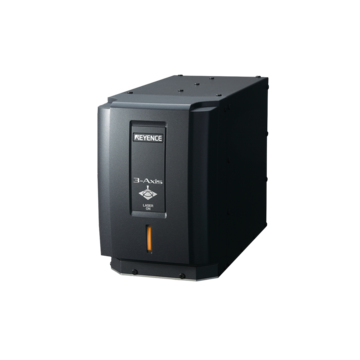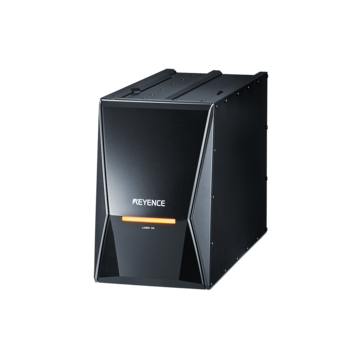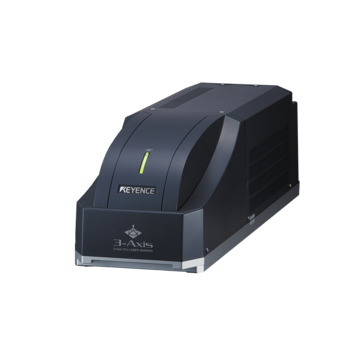Laser Marking Systems / Laser Markers
Dry Ice Blasting vs. Laser Cleaning: Which method is best?
-
Tags:
- Laser Cleaning , Laser Ablation , Laser Oxide Removal
Maintaining equipment on the shop floor requires considerable effort. Without it, the machines that keep the industry running wouldn’t last very long. Several methods are used for industrial cleaning, two prominent options being dry ice blasting and laser cleaning. For this article, we’ll compare dry ice blasting vs. laser cleaning to see how they stack up.
What is Dry Ice Blasting?
As the term suggests, this cleaning method utilizes dry ice. Although it is considered a more traditional method in modern manufacturing, it remains a go-to solution for many types of parts and products.
The process consists of using compressed air to propel the dry ice forward, clearing any potential contaminants off the targeted surface. While dry ice blasting machines are effective against soft and thick layers of contaminants, they won’t work on everything. Nevertheless, it is environmentally friendly and still applicable even among more modern cleaning solutions.
Working Principle of Dry Ice Blasting
There’s a secret ingredient that makes dry blast cleaning so effective. Through the effect of expansion shock, the forced stream of dry ice immediately loosens debris. In the same vein, thermal shock occurs due to the rapid temperature change, and this also acts as an effective separator.
Keep in mind that this process includes the use of dry ice grains. When blasted onto a surface, these grains act like sandblasting. Combining all of these effects makes it difficult for many types of debris to remain on a surface.
Limitations of Dry Ice Blasting
While there's no argument against the use cases of dry ice blasting, it isn't always the best choice. Over the years of using the cleaning method, professionals have encountered a few downsides to the practice.
Some common disadvantages of dry ice blasting include:
- The equipment is easily prone to damage
- Carbon dioxide buildup can lead to safety risks
- Low-temperature storage can be costly
- Multiple layers of protection are required to use this method
- It may not be as effective for all types of debris
Even with its downsides, dry ice blasting will continue to be used for many more years to come. However, in light of newer methods and cleaning technologies, many manufacturers are turning their attention toward laser cleaning applications.
What is Laser Cleaning?
Lasers consistent value add to manufacturing companies have incentivized the exploration of additional areas they can be used. With the ability to knock away all kinds of contamination layers, there are different types of lasers to handle the task.
There are plenty to choose from, but one of the most popular among modern manufacturers is fiber laser cleaning. Widely used across industries like automotive, medical, and more, it is a much-needed resource.
While there’s more than enough reason to stick with other laser cleaning tools, a fiber laser marker is an excellent, universal choice. To help avoid any confusion, it is important to dissect the details behind how laser cleaning works.
Working Principle of Laser Cleaning
Starting with the use of a highly focused laser beam, a laser cleaning machine delivers rapid heating to surfaces of all kinds. This heat is so intense that it simply evaporates any debris it comes in contact with.
With that being said, safety precautions are a priority when using such a device. Aside from this, laser cleaning has proven to be a much more effective and cost-efficient solution.
There's a fine line here, as the laser doesn't cause any damage to the material. This part of the process, called selective absorption, ensures that only the contaminants are evaporated without directly contacting the underlying material. In most circumstances, the practice is used in a pulsed interval to improve control over the laser and cleaning pattern.
Depending on the sensitivity of the product, or part being cleaned, there are also options to use UV or hybrid laser marker equipment. Laser cleaning is not only unique but is now an essential factor in manufacturing, quickly making dry ice blasting machines look outdated.
Benefits of Laser Cleaning Over Dry Ice Blasting
Dry ice blasting methods won't be going anywhere anytime soon, but it is clear that laser cleaning outshines in a few areas. Overall, both practices are utilized, but from a business standpoint, time, quality, and cost are daily considerations. The table below shows the benefits of laser cleaning over dry ice blasting.
| Parameter | Laser Cleaning | Dry Ice Blasting |
|---|---|---|
|
Parameter
Eco-impact
|
Laser Cleaning
Environmentally friendly due to the use of zero consumables.
|
Dry Ice Blasting
Also considered eco-friendly but commonly produces secondary waste.
|
|
Parameter
Accuracy
|
Laser Cleaning
Precise control with the ability to selectively remove contaminants.
|
Dry Ice Blasting
Offers some precision but primarily covers a general area.
|
|
Parameter
Safety
|
Laser Cleaning
Known to guarantee minimal safety risk.
|
Dry Ice Blasting
Requires multiple layers of protection, including a well-ventilated area.
|
|
Parameter
Cost
|
Laser Cleaning
Initial costs are higher, but they save thousands in the long term.
|
Dry Ice Blasting
Storage and handling costs of dry ice are very expensive compared to laser cleaning tools.
|
|
Abrasiveness
Abrasiveness
|
Laser Cleaning
Effortlessly eliminates debris without damaging the surface of the item.
|
Dry Ice Blasting
Commonly delivers an abrasive result due to the use of dry ice grain.
|
Dry ice cleaning has served its purpose for many years and continues to do so, but laser cleaning is a smarter choice for many manufacturers.
Discover more about this product.
Click here to book your demo.

Ready to Experience Efficiency and Precision with Laser Cleaning Machines?
Getting the most out of laser cleaning starts with investing in the right machines. Laser technology doesn't take a one-size-fits-all approach. Considering the unique benefits of hybrid, fiber, or UV laser markers, each can have its own applications for laser cleaning.
KEYENCE has the expertise and experience you need to guide you in the right direction. Laser cleaning might sound like a foreign concept to some, but the technology itself has a minimal learning curve. Above all else, we’re here to help get you started with proper laser cleaning equipment.
The Bottom Line
Many manufacturers continue to debate the differences between dry ice blasting and laser cleaning and which investment is worth their time. Since landing on the shop floor, laser cleaning methods have continued to impress and work their way to the new standard.
For those looking to explore the lengths of laser cleaning benefits & laser marking, contact us for more information on how we can assist.
We’re here to provide you with more details.
Reach out today!


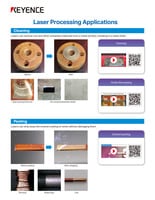
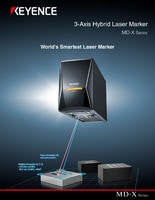

![Laser Processing Guidebook STEP. 4 [Coating/Film Layer Removal]](/img/asset/AS_46970_L.jpg)
